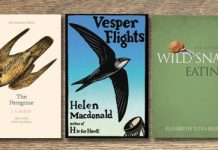David Worthington visits Hauser & Wirth and sees the commercial reality that Government is missing
For the international art gallery Hauser & Wirth, one of the most important events of the year is not a glamorous private view in New York, but the pumpkin festival at their Somerset outpost, Durslade Farm.
Held on October 31st, directors and staff will join the local community in celebrating the pumpkin harvest during this one-day event. It typifies the ethos behind this art hot spot in the South West. Durslade Farm combines Iwan and Manuela Wirth’s main interests: farming; food; gardening; architecture and art.
The Wirths started their art business in their hometown of Zurich before opening a space in Piccadilly, then two huge art galleries in Savile Row, London and one in New York. The announcement that they were setting up in Somerset caused a collective shiver of anticipation in the art world combined, it must be said, with a little bemusement. Indeed one scratches ones head to understand why this most contemporary of art dealers would chose the West Country for its latest venture. Bruton is a charming small town that has gradually been gentrifying with new antique shops and the opening of the Chapel Restaurant. But East Hampton it is not … yet. The art world is abuzz and people have been driving down to see what is going on. The car park was full the Tuesday I visited.
After setting up home in Somerset, the Wirths kept passing the derelict farm and thinking of what they could do with it. They managed to acquire it and spent the next two years talking to the community and planners, explaining their vision, with it finally opening in July 2014. Though still a commercial gallery with most exhibits for sale, at the heart of the project is education. For the pumpkin festival local children are taking part in various events under a collaboration with FACE, Farming Countryside and Art, who aim to educate children about farming, sustainability and food. During my visit I saw groups of teenagers rehearsing a play with two directors from the Bristol Old Vic Young Theatre, whilst nearby others practised the musical component. At Hauser & Wirth Somerset there is strong commitment to the community. Pumpkin seeds were made available to locals at the front desk, and they have been encouraged to bring the resulting produce to the festival, where amongst many other activities, there will be a carving competition.
The initial impression on arriving is the sensitivity of the renovation. The main farm buildings have been re-pointed but otherwise left in their original state. The scale is domestic until you turn a corner to see a large steel Alexander Calder sculpture from the 1960s. The interiors are restored but some of the original stone and wood has been left exposed. The first gallery space is the 18th century Threshing Barn, which was empty, when I visited, save for a Jenny Holzer LED light sculpture, “Move”. It flashed declassified texts about the death of an Afghan soldier, whilst in US custody in Afghanistan. The intimate size continues through two more rooms from which you find yourself in the charming Cloister Garden. Next you enter the Rhoades Gallery and suddenly you are in a giant white cube space. The transition is dramatic and theatrical with the enormity of the room allowing for large installations. The Argentine architect Louis Laplace has harmonised the old with the new, matching the local stone with honey coloured poured concrete. The palette is soft and warm, with the roofs gradually ascending from the older structures to the taller new building. Exiting you come to the garden, designed by internationally renowned landscape architect Piet Oudolf. The lay out is contemporary with oval beds and mounds, and a crazy squashed monumental clock “Clocked Perspective” by Anri Sala. The planting scheme seemed to fascinate many visitors, as there was a lot of note taking. Others were taking a snooze on comfortable recliners provided by the gallery, under the shade of a loggia. Dursalde Farm has a restaurant and bar with groovy staff, and an interesting menu, mostly cooked with local produce. There is even a glass box for salting meat that looks like a Damien Hirst sculpture. Artists’ residencies will accompany the exhibition program in the future, where they may stay for months at a time in a nearby house, to make work directly for the spaces. It is hoped that the artists will be as inspired by the landscape as those already involved with Hauser & Wirth Somerset so obviously are.
So a global art organization is making things local. But there is another part to this cultural equation and what it says about the economy. London has become one of the world’s financial centres bringing liquid assets and buyers, thus attracting international art galleries. So Hauser & Wirth Somerset is privately funded. It is very impressive and seems genuinely philanthropic, bringing international artists to the region as well as showing local artists, including photographer Don McCullin this autumn. But its opening coincided with Somerset Council cutting its art budget by 100%. We should be saying to local and national government: look at the car park. Culture brings tourists, 125,000 visitors in one year to Durslade and that is business we need to grow in the South West. But we cannot and should not just rely on the private sector. We need government to support the arts too for the sake of scale, and diversity.









